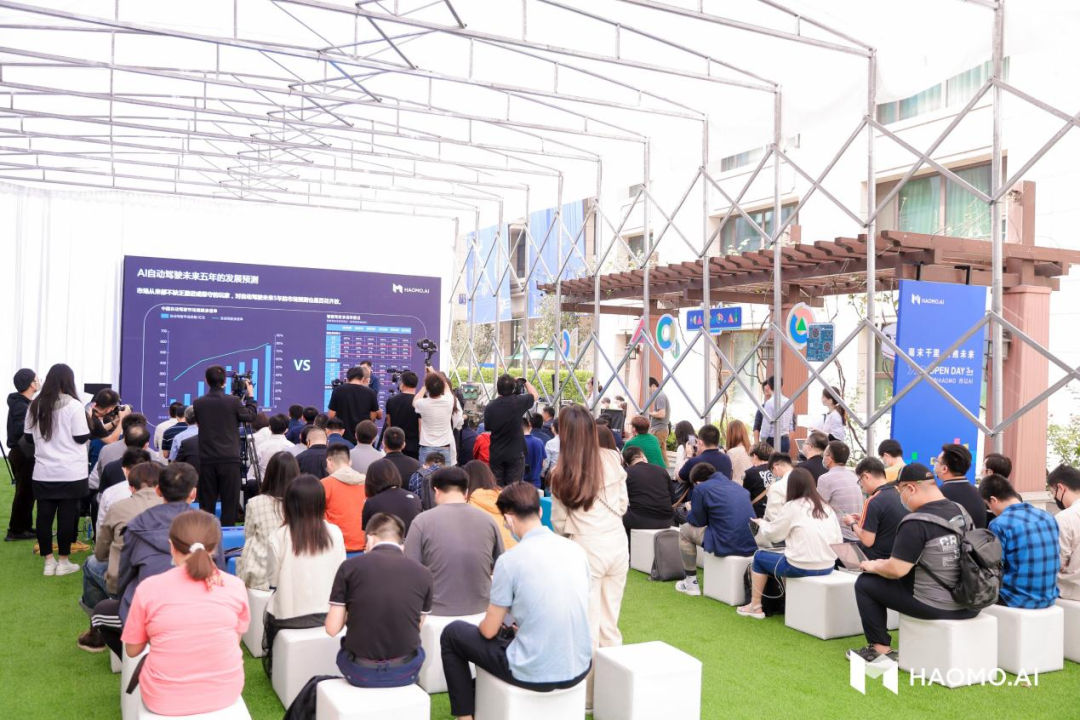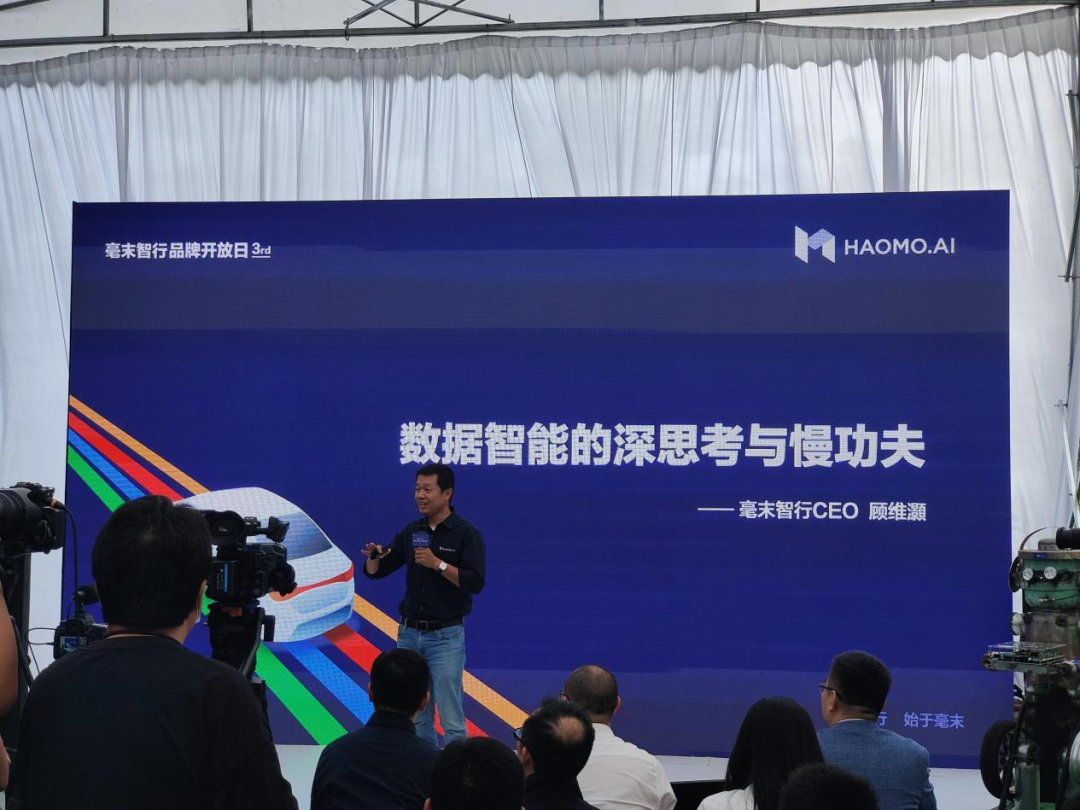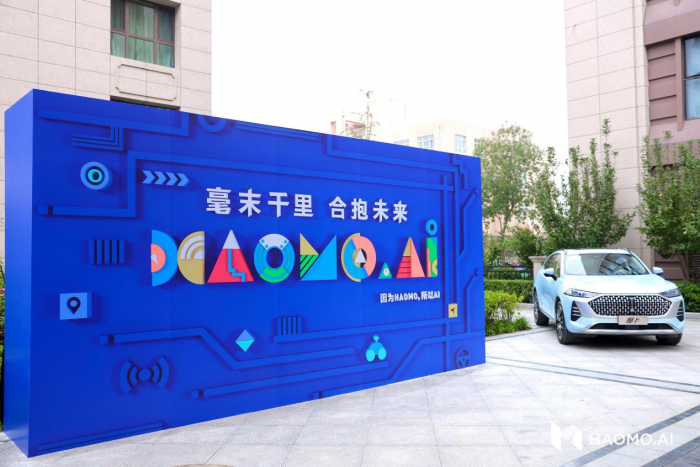Author: Mr.Yu
Beijing, September 28, 2021
Cloudy breeze, cool and comfortable.
As an AI technology company dedicated to autonomous driving, Momenta chose to hold its third brand open day activity in an open space with simulated grass and a white pillar canopy, rather than a conference center with a strong business atmosphere, making this brand event more like a grassland party.

In this major promotion, Momenta’s Chairman Zhang Kai and CEO Gu Weihao, along with other core executives, took the stage one after another to share the latest developments of Momenta in automatic driving hardware and commercial logistics vehicles:
- Momenta’s assisted driving trip has exceeded 1 million kilometers;
- The Navigation on HIPilot (NOH) system will be officially released in October 2021;
- Collaboration with Ali’s Damo Institute on unmanned logistics delivery vehicle “Little Donkey” to help its quality assurance and large-scale production…
Less than two years since its establishment, Momenta has already achieved production landing in passenger cars, commercial vehicles, and automatic driving hardware.

Momenta CEO Gu Weihao admitted in his speech that Momenta had discovered many unforeseen situations in the process of implementing the technology. The real world is far more complex than people had imagined.
Mr. Yu still remembers a sentence in a article by a world-renowned computer vision expert, Professor Zhu Songchun:
“The key problem with artificial intelligence and robots now is the lack of physical and social common sense.”
It has been almost four years since Professor Zhu’s article was published, and it seems that the world has not changed much, but there are still many changes if you look closely.
Of course, the push from technology manufacturers and research institutions should not be ignored.
In the passenger vehicle field, Momenta’s assisted driving product “Xiaomohe” has traveled a total of more than 1 million kilometers, including the driving distances of WEY Mocha, Tank 300 City Edition owners, and the test distances of Momenta’s test vehicles. Among them, the assisted driving function activation rate of WEY Mocha has reached 30%, and the longest distance that the car owner has driven on a single trip with the assisted driving function activated is 137 kilometers. The car owners of Great Wall love the “Intelligent Evasion” function, which has been activated tens of thousands of times.Letting AI become usable and continuously improving it requires valuable data, even if obtained through manual annotation. Gu Weihao believes that whoever can sustainably, low-cost, and efficiently obtain valuable data has the opportunity to survive and win in the end.
There are two methods for using the Maomo Zhixing data diagnosis system according to Gu Weihao. One is to obtain diagnostic results through explicit system failure signals, such as manual takeover signals. The other is to diagnose on-device model errors through more powerful models that surpass on-device computing power and timeliness constraints.
Firstly, by deploying the gray testing mode through pre-embedded rules in the already deployed self-driving system, it was incomplete for perception and many potential high-value scenarios were missed.
As a result, it is necessary to automatically diagnose on-device small models through offline large models.
Maomo calls this “large model” the Fundamental Model, a full-task perception model based on Transformer. The on-device small model becomes the Domain Model, responsible for only one part of the perception task.
Through this automatic diagnosis, small targets that are missed, occluded, or truncated can be identified. Similarly, automatic diagnosis also includes missed target issues at toll stations, irregular vehicles, rain, and night.
There is a certain difference between AI cognition and human cognition, and to solve this problem, it is necessary to find problematic scenarios and supplement sufficient sample data through the AI system for that scenario, namely finding enough similar data of the same type. Only through this sample allocation can better AI models be produced.
In urban scenarios, this corresponds to more people riding electric bikes, more vehicles occluded by vegetation, and more vehicles intercepted by bends or traffic flow.
Through Great Wall’s mass-produced cars, Maomo has already possessed a considerable database of road scenes. Maomo used unsupervised learning to vectorize images, converting them into feature vectors, and then used “spectral clustering” to cluster similar images together. After obtaining the clustering results, large amounts of data of the same category as the “problem scenario” are selected as positive samples, and similar, easily confused data of other categories as negative samples. In the selected categories, data near “cluster centers” and “cluster boundaries” are chosen to enhance the efficiency of annotation. This can effectively mix with “external data” and improve the final model’s effectiveness.Simulation verification is an important part of all autonomous driving safety systems today. In traditional simulation verification, testers spend a lot of time and effort configuring simulation scenarios and doing repetitive and arbitrary work, with efficiency and effectiveness to be improved.
To achieve more efficient verification of technology, Gu Weihao stated that Momenta has developed an automatic semantic scene conversion tool and a parameter generalization tool for large-scale simulation test cases. These tools can automatically convert the description text of the scenario library in CSS into simulation test scenarios and discretely sample a vast number of simulation test cases within an appropriate range through parallel processing in the cloud, generating more than 10,000 simulation test cases a day.
To support a large amount of perception and reasoningcomputations, Great Wall Motors and Momenta jointly launched ICU 3.0, the world’s most powerful autonomous driving computing platform that is ready for mass production: the Momenta “Magic Cube 3.0”. This platform has a single-board computing power of 360 TOPS, which can be continuously upgraded to 1440 TOPS to effectively support on-board calculations of AI visual models, as well as filtering, cleaning, obfuscating, and streaming of perceptive data on the vehicle. This serves as the AI autonomous driving brain of the Momenta assisted driving system, all algorithms of which are self-developed by Momenta. By 2022, Great Wall Motors equipped with the Magic Cube 3.0 is expected to have the most advanced perception capability in the Chinese market, and Momenta is likely to become the largest domestic autonomous driving computing platform – if there are no other dark horses that come out of nowhere in the remaining quarter of 2021.
As mentioned earlier, Momenta’s self-developed Navigation on HIPilot (NOH) intelligent navigation assisted driving system is expected to be officially launched in October 2021 and will be installed in vehicles such as the Great Wall WEY Mocha.
Momenta CEO Zhang Kai proposed that 2022 will be the watershed year for the commercialization of AI autonomous driving. For start-up companies in the autonomous driving field, in 2022, they must develop their own relatively stable business model and deeply cultivate this field while ensuring that the business model has broad prospects.In the field of last-mile logistics, Hao Mo Zhi Xing has chosen relatively complicated urban open road scenarios to ensure system safety and timely response by reducing vehicle speed. Currently, Hao Mo’s low-speed logistics product “Little Camel” has been in operation in Shunyi, jointly with partner “Wumei Duodian” for over 5 months, with a cumulative service amount of over a thousand orders.
In the field of passenger cars, Zhang Kai used Great Wall Motors as an example: “In 2022, Hao Mo Zhi Xing will undertake the development task of high-level auxiliary driving for 34 Great Wall Motors models that are pending market release, accounting for nearly 80% of Great Wall Motors’ pending models for the year. Of these models, 30% are standard, and the rest are high-end configurations. It is estimated that the penetration rate of high-level auxiliary driving for Great Wall Motors will exceed 40% in 2022.”
In Zhang Kai’s view, the market penetration rate of high-level auxiliary automatic driving in 2025 is likely to reach 80%, and the future high-level auxiliary driving and automatic driving will have broad market space.
“In the end, the company adopts a windmill strategy, uses the advantages of cost and scale to build a data intelligence with data iteration efficiency and cognitive intelligence as its core competitiveness, and gradually lands in three business lines: passenger cars, low-speed unmanned logistics vehicles, and intelligent hardware. As the axis of the windmill, then the real data generated by each business line feeds back to data intelligence, realizing the positive feedback flywheel of rapid development.”
This description is from Hao Mo Zhi Xing’s Baidu Baike entry.
We believe that, like us, many of you have seen some technological start-ups quietly collapsing before their business models have been validated for sustainability in the market. In contrast, in less than two years since its establishment at the end of November 2019, backed by Great Wall Motors, Hao Mo Zhi Xing has rooted itself in its three business lines and continued to branch out.
With this brand day event as a node, we can clearly feel that Hao Mo Zhi Xing’s “windmill” is already turning. It is expected to turn faster and faster.
This article is a translation by ChatGPT of a Chinese report from 42HOW. If you have any questions about it, please email bd@42how.com.
